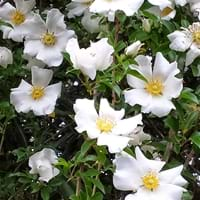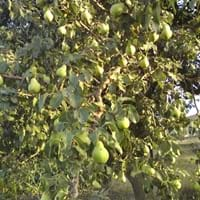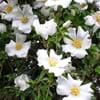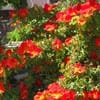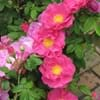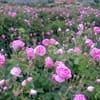Life Span
Perennial
Perennial
Type
Flowering Plants, Ornamental Plant, Perennial, Shrub
Fruit
Origin
Laos, Southern China, Taiwan, Vietnam
Europe, Western Asia
Types
Not Available
common pear
Number of Varieties
Not Available
Habitat
Not Available
Humid climates, moist forests
USDA Hardiness Zone
Not Available
5-9
AHS Heat Zone
Not Available
9-5
Sunset Zone
Not available
2a, 2b, 3a, 3b, 4, 5, 6, 7, 8, 9, 14, 15, 16, 17, 18
Habit
Clump-Forming
Oval or Rounded
Flower Color Modifier
Bicolor
Bicolor
Fruit Color
Non Fruiting Plant
Yellow, Dark Red, Sandy Brown
Leaf Color in Spring
Green
Green, Dark Green
Leaf Color in Summer
Green
Green, Dark Green
Leaf Color in Fall
Green
Purple, Dark Green, Burgundy
Leaf Color in Winter
Green
Light Green
Plant Season
Spring, Summer, Fall
Spring, Summer, Fall
Sunlight
Full Sun, Partial Sun
Full Sun
Growth Rate
Medium
Medium
Type of Soil
Loam, Sand
Loam
The pH of Soil
Acidic, Neutral
Neutral
Soil Drainage
Well drained
Well drained
Bloom Time
Spring, Late Spring, Early Summer, Summer, Late Summer, Early Fall, Fall
Spring
Repeat Bloomer
Not Available
No
Tolerances
Drought
Drought
Where to Plant?
Container, Ground, Pot
Ground
How to Plant?
Cuttings
Grafting, Seedlings
Plant Maintenance
Medium
Medium
Watering Requirements
Average Water Needs
Medium, Water less during winter, Water more in summer, when new, water every week
In Summer
Lots of watering
Lots of watering
In Spring
Moderate
Moderate
In Winter
Average Water
Average Water
Soil pH
Acidic, Neutral
Neutral
Soil Type
Loam, Sand
Loam
Soil Drainage Capacity
Well drained
Well drained
Sun Exposure
Full Sun, Partial Sun
Full Sun
Pruning
Remove damaged leaves, Remove dead branches, Remove dead leaves
Remove damaged leaves, Remove dead branches, Remove dead leaves
Fertilizers
All-Purpose Liquid Fertilizer
All-Purpose Liquid Fertilizer
Pests and Diseases
Beetles, Black Spot, Caterpillars, Downy mildew, Mosaic viruses, Powdery mildew, Rust, Scale insects, Thripes
Red blotch
Plant Tolerance
Drought
Drought
Flower Petal Number
Double
Single
Edible Fruit
Not Available
Yes
Foliage Texture
Medium
Medium
Foliage Sheen
Glossy
Glossy
Invasive
Not Available
No
Self-Sowing
Not Available
Yes
Attracts
Birds, Butterflies
Birds, Butterflies
Allergy
Rash
Digestive Problems, Itchiness
Aesthetic Uses
Showy Purposes
Cottage Garden
Beauty Benefits
Not Available
Not Available
Environmental Uses
Air purification
Air purification
Medicinal Uses
Not Available
Astringent, Febrifuge, Sedative
Part of Plant Used
Flowers
Fruits, Wood
Other Uses
Oil is used in perfume, soaps, creams, etc.
Shelterbelt, Used as a dye, Used as firewood, Used for woodware
Used As Indoor Plant
Yes
No
Used As Outdoor Plant
Yes
Yes
Garden Design
Container, Cutflower, Feature Plant, Foundation, Mixed Border, Topiary / Bonsai / Espalier
Edible, Fruit / Fruit Tree, Topiary / Bonsai / Espalier
Botanical Name
Rosa laevigata
PYRUS communis 'Seckel'
Common Name
Cherokee Rose
Dessert Pear, Pear, Seckel Pear
In Hindi
Cherokee rose
Seckel Pear
In German
Die Cherokee-Rose
Kultur-Birne
In French
Le rosier des Cherokees
Poirier commun
In Spanish
rosa cherokee
peral europeo, peral común
In Greek
Cherokee rose
Seckel Pear
In Portuguese
Cherokee rose
Seckel Pear
In Polish
Cherokee rose
Grusza pospolita
In Latin
Cherokee rose
Seckel Pear
Phylum
Magnoliophyta
Tracheobionta
Class
Magnoliopsida
Magnoliopsida
Clade
Not Available
Angiosperms, Eudicots, Rosids
Tribe
Not Available
Not Available
Subfamily
Not Available
Not Available
Number of Species
Not Available
Not Available
Season and Care of Cherokee Rose and Seckel Pear
Season and care of Cherokee Rose and Seckel Pear is important to know. While considering everything about Cherokee Rose and Seckel Pear Care, growing season is an essential factor. Cherokee Rose season is Spring, Summer and Fall and Seckel Pear season is Spring, Summer and Fall. The type of soil for Cherokee Rose is Loam, Sand and for Seckel Pear is Loam while the PH of soil for Cherokee Rose is Acidic, Neutral and for Seckel Pear is Neutral.
Cherokee Rose and Seckel Pear Physical Information
Cherokee Rose and Seckel Pear physical information is very important for comparison. Cherokee Rose height is 200.00 cm and width 300.00 cm whereas Seckel Pear height is 370.00 cm and width 120.00 cm. The color specification of Cherokee Rose and Seckel Pear are as follows:
Cherokee Rose flower color: White
Cherokee Rose leaf color: Green
Seckel Pear flower color: White
- Seckel Pear leaf color: Green and Dark Green
Care of Cherokee Rose and Seckel Pear
Care of Cherokee Rose and Seckel Pear include pruning, fertilizers, watering etc. Cherokee Rose pruning is done Remove damaged leaves, Remove dead branches and Remove dead leaves and Seckel Pear pruning is done Remove damaged leaves, Remove dead branches and Remove dead leaves. In summer Cherokee Rose needs Lots of watering and in winter, it needs Average Water. Whereas, in summer Seckel Pear needs Lots of watering and in winter, it needs Average Water.
